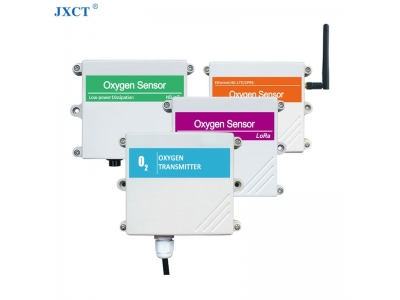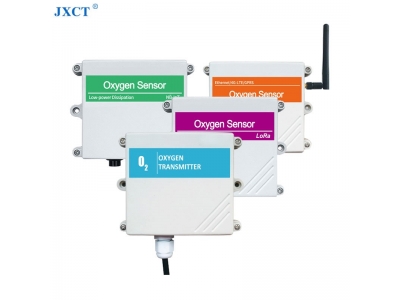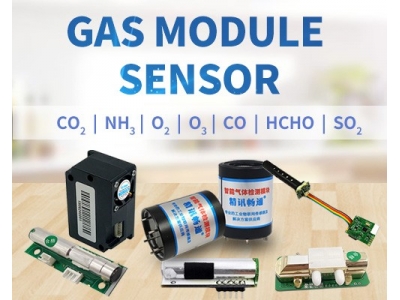
How does an Oxygen Sensor Work?
What is an oxygen sensor? How do an oxygen sensor work? While there are many types of oxygen sensors, there are three main ways they work.

What is an oxygen sensor? How do an oxygen sensor work? While there are many types of oxygen sensors, there are three main ways they work.
What is an oxygen sensor? How do an oxygen sensor work? While there are many types of oxygen sensors, there are three main ways they work:
A chemical reaction that releases electrons in the presence of oxygen.
Fluorescence: Change in the intensity of light emitted by a fluorescent substance when exposed to oxygen
When oxygen passes through, the wavelengths of sound, light, or magnetic fields change.

Each of these methods of measuring oxygen has advantages and disadvantages. While oxygen sensors are used in many applications and industries, including automotive, health and medicine, industrial, food and beverage packaging, pharmaceuticals, and more, each sensor uses a different type of oxygen sensor that is best suited to the application.
Note that most oxygen sensors are designed to measure between 0 and 25% oxygen by volume or in breathable air. However, specialized oxygen sensors that can measure up to 100% oxygen are also available.
Electrochemical oxygen sensors are primarily used to measure oxygen levels in ambient air. They measure a chemical reaction within the sensor that creates an electrical output proportional to the oxygen level. Because electrochemical sensors produce a current, they can be self-powered, making them useful for measuring oxygen gas battery-operated underwater diving and hand-held personal safety devices. Examples include breathalyzers, respiratory sensors, and blood glucose sensors.

In terms of sensor advantages, electrochemical gas sensors are sought after due to their low power requirements, lower detection limits, and are often less directly affected by interfering gases. They also tend to be the least expensive kind of sensor.
A challenge for electrochemical oxygen sensors is that they depend on a chemical processes that is temperature dependent. The output of most electrochemical sensors will rely heavily on temperature compensation to provide reliable readings over a broad scope of ambient conditions.
Another challenge for electrochemical oxygen sensors is that over time the chemical reaction slows down and stops, typically between 1 and 3 years depending on the sensor design. Storing them in an oxygen-free environment will not add to the life span of the sensor. As the sensor ages it requires frequent recalibration and is not as accurate as other sensors.
However, because of their rugged design, low cost, and self-powering, electrochemical oxygen sensors are used in many devices, especially hand-held gas detectors.
Optical oxygen sensors are based on the principle of fluorescence quenching by oxygen. They rely on the use of a light source, a light detector, and a luminescent material that reacts to light. In many fields, luminescence‐based oxygen sensors are replacing the Clark electrode.
The principle behind fluorescence quenching by molecular oxygen has long been understood. Some molecules or compounds, when exposed to light, will fluoresce (i.e. emit light energy). However, if oxygen molecules are present, the light energy is transferred to the oxygen molecule resulting in less fluorescence. By using a known light source the amount of light energy detected is inversely proportional to the number of oxygen molecules in the sample. Therefore, the less fluoresce detected, the more oxygen molecules must be present in the sample gas.
In some sensors, the fluorescence is detected twice at a known time interval. Instead of measuring the total fluorescence, the drop in luminescence (i.e. fluorescence quenching) over time is measured. This decay-based time method allows for a simpler sensor design.
Common applications that involve optical sensors include medical facilities, lasers, imaging systems, and fibers. In regards to sensor advantages, many find optical sensors to hold greater sensitivity, wider dynamic range, distributed configuration and multiplex capabilities.
Ultrasonic oxygen sensors use sound speed to measure the amount of oxygen in a gas or liquid sample. In liquid, upstream and downstream sensors measure the velocity difference between high-frequency sound waves. The change in velocity is proportional to the amount of oxygen in the sample. In gases, the sound speed varies as the molecular composition of the gas varies. This makes ultrasonic oxygen sensors useful for anesthesia ventilators or oxygen generators where the output is a known concentration of oxygen gas. Typical applications that require ultrasonic oxygen sensing methods are hospitals, gas analysis, or applications involving oxygen concentrators or portable oxygen generators.